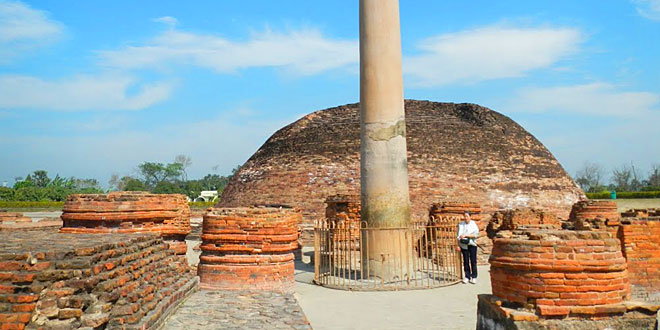Question: What were some of the unique achievements of Samudragupta?
Answer:
- The inscription tells us about the achievements of Samudragupta. It mentions a list of rulers he defeated and the territories that he conquered.
- Samudragupta defeated nine kings in the north Ganga-Yamuna doab) and twelve kings of the south and eastern Deccan.
- The rulers of some Himalayan states, and states like Nepal, Bengal and Assam accepted his power and paid him tribute.
- He also brought the forest kingdoms of Central India under his control.
- Samudragupta did not annex the southern territories because he realized it would not be easy control such a vast empire from Magadha. So the rulers of South India such as the Pallavas of Kanchi accepted his overlordship and paid him tribute.
- The rulers outside India such as the ruler of Sri Lanka and the Saka and the Kushan rulers, who were ruling in Afghanistan, also accepted his supremacy.
Question: What did Fa Hien write about people in the Gupta period?
Answer: Fa Hien tells us that people were happy, peaceful, prosperous and secure. People were honest and obeyed laws and crime was rare. Punishments were not severe. There was no spy system. People worked on land and paid one fourth to one sixth of the produce as tax.
Question: Write a note on the administration of the Gupta rulers?
Answer: The king was the most powerful person the empire was divided into provinces (bhukti) that were further divided into districts (vishayas). Each district was divided into a group of villages. There were number of officers at different levels of administration. The provinces that were under the charge of princes were called uparikas, who were assisted by a group of officers called the Kumaramatyas. The districts were placed under the charge of vishyapatis. These posts became hereditary, which meant that the son could succeed his father. The village the administration was looked after by a council of village elders headed by the village headman. City was governed by council consisting of the council president, the chief scribe and representatives from the guilds of merchants and artisans. The administration during this period was decentralized and the officials had the freedom to govern the territories under their control.
 Class Notes NCERT Solutions for CBSE Students
Class Notes NCERT Solutions for CBSE Students


